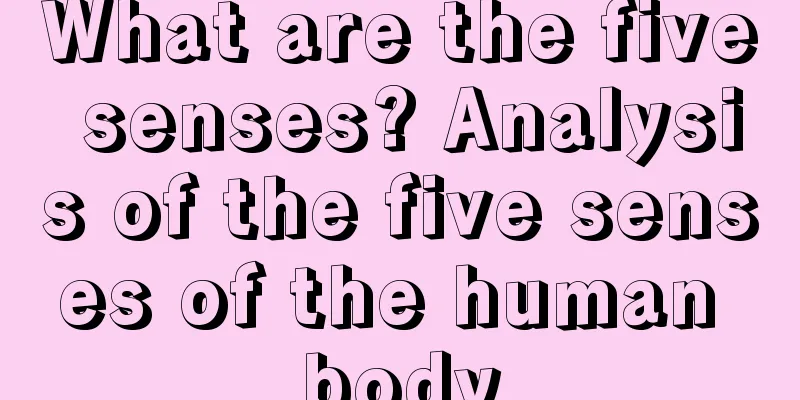What are the five senses? Analysis of the five senses of the human body

|
When people describe someone as good-looking, they usually use the term "delicate facial features". So which five features do people often refer to as "delicate facial features"? Below, the editor will share with you an analysis of the human body's facial features. Friends who are interested, come and take a look. 1. Physiognomy and Five Senses The five senses refer to the five organs of the human body: ears, eyebrows, eyes, nose, and mouth. It is often said that the five features are regular and delicate, which refers to the appearance. Therefore, the five features refer to the five major facial features that represent a person's appearance. In physiognomy, they are each given a noun as follows: (1) Ear: It is the organ of hearing. (2) Eyebrows: They are called the organ for protecting longevity. (3) Eye: Also known as the Inspector. (4) Nose: It is known as the organ of judgment. (5) Kou: Also known as the cashier. Through the analysis of the facial features, we can make some basic physiognomy analysis of a person and further judge a person's fortune. Usually, the ears are related to a person's longevity; the eyebrows are related to health and status; the eyes are related to a person's willpower and kindness; the nose is related to a person's wealth and health; and the mouth is related to a person's happiness, food and noble luck. 2. Medical Five Senses However, there are slight differences in the understanding of Chinese and Western medicine. Chinese medicine focuses on ears, eyes, nose, lips, and tongue; Western medicine focuses on eyes, mouth, ears, nose, and throat. The so-called regular facial features usually refer to that the respective parts are straight, of appropriate size, and have no obvious deformities or pathological manifestations. Three and five are divisors Some people also suggest that five is a common divisor for the five senses. For example, the three in “three people make a tiger” does not mean three people make a tiger, but refers to multiple people. Five is often an approximate number referring to things of the same type. For example, five grains is a general term for food, and five metals is a general term for metals. So some people say that the five senses do not refer to organs in five parts of the body, but organs in multiple parts of the body. 4. Five sense organs of reference books The Xinhua Dictionary states that the five senses include eyes, ears, mouth, nose, and body. The explanation in the dictionary is: eyes, ears, mouth, nose, and heart. Nowadays, most people agree on the five senses of physiognomy and medicine, namely ears, eyebrows, eyes, nose, mouth, ears, eyes, nose, lips, tongue and eyes, mouth, ears, nose and throat. The above is an introduction to what the five senses refer to and the analysis of the five senses of the human body. For more content about physiognomy, please continue to follow the "Dream Interpreter Fortune Telling Network Xiong Zhanghao". |
<<: What is Yae-chi? What is Yae-chi's facial features like?
>>: What does thin hair mean? Hair face analysis
Recommend
Physiognomy: The nose tells your fortune
Physiognomy: The nose tells your fortune The nose...
Is it true that women with double palms are either rich or noble?
Is it true that women with double palms are eithe...
What does dual career lines mean?
In palmistry, the career line refers to the middl...
Are men with droopy eyebrows more likely to get divorced?
Eyebrows have the ability to act like eyes, and i...
How to read the career line on a woman's palm? Will you be a strong woman?
I believe everyone knows that there is a career l...
Is it good to have dull eyes?
Among our facial organs, eyes are one of the most...
Can people with horizontal lines on the bridge of the nose accept their partner not coming home at night?
Staying out all night is not a good habit. Not on...
Ears higher than eyebrows
The ears can not only reveal one's childhood ...
What is the character and fate of a man with small and thin ears?
What is the personality and fate of a man with sm...
Bitcoin OKCoin: MIT establishes blockchain scholarship to promote cryptocurrency application
Consensus 2015 is working with the MIT Media Lab’...
Filecoin staged a mass exodus? Investors: short after reaching a high
Some people say that the Internet is the printing...
How does a good nose help people?
When it comes to physiognomy, when most people se...
A woman with a mole under her left nostril is very popular
The nose is a very important organ for a person. ...
Analysis of moles on men's back
Each of us has moles on our body, and some of the...
Analysis of the fortune line of palmistry for women with bad fortune
How to interpret the wealth line diagram for wome...









